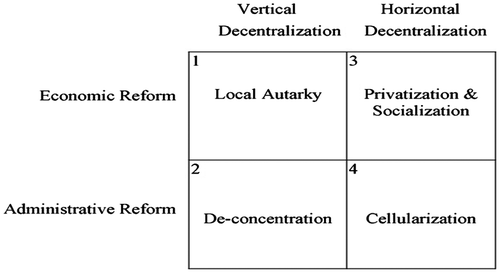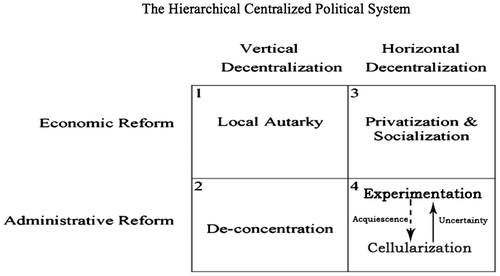Figures & data
Figure 1. Dual decentralization in the transition economy. Source: Painter and Mok (Citation2008), p. 139.

Figure 2. Number of newly approved transnational cooperation activities by the MOE (1991–2016). Source: MOE (2016), calculated by the authors.

Figure 3. Dual decentralization in TNHE. Source: Modified from Painter and Mok (Citation2008), p. 139.

